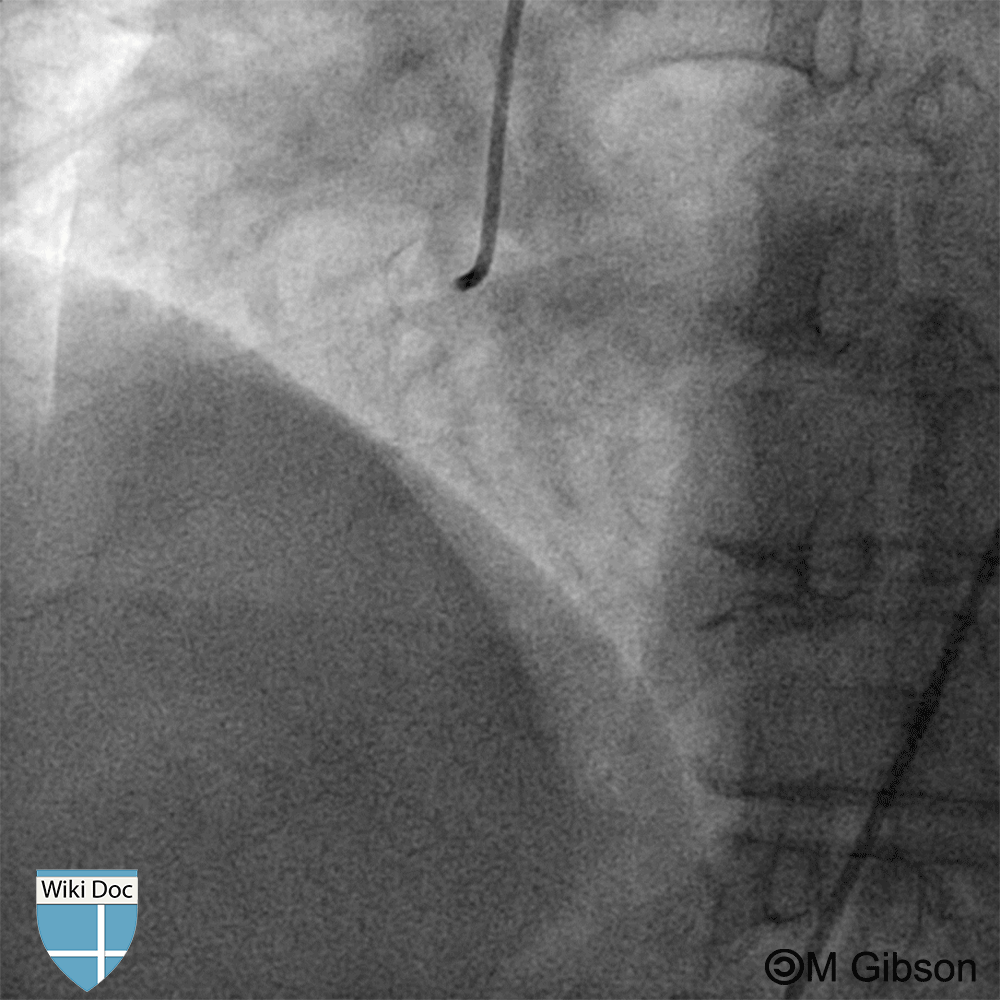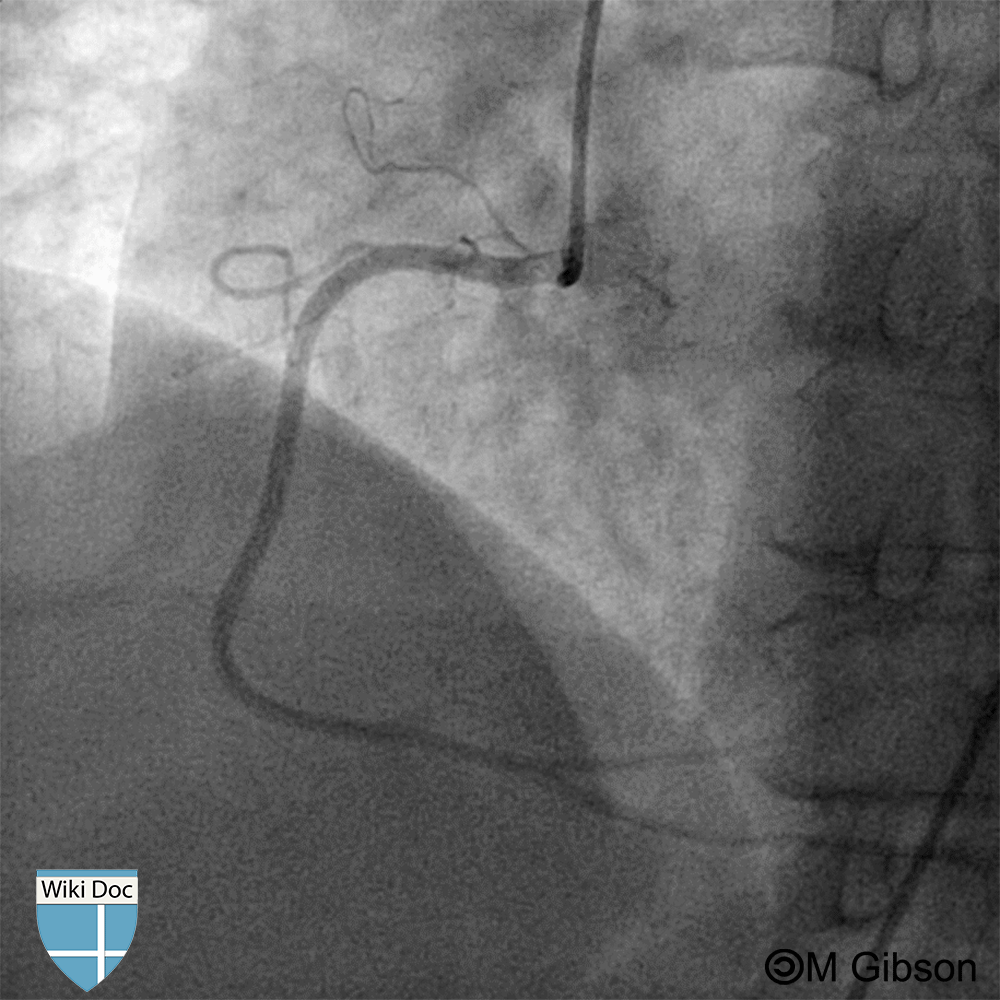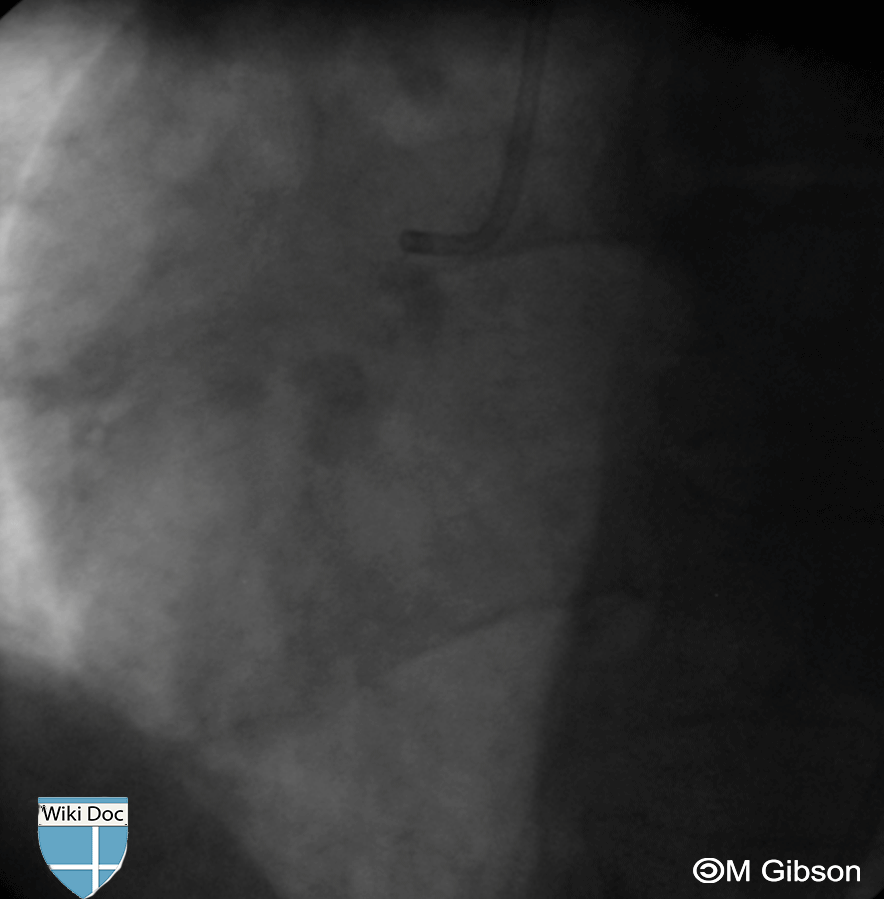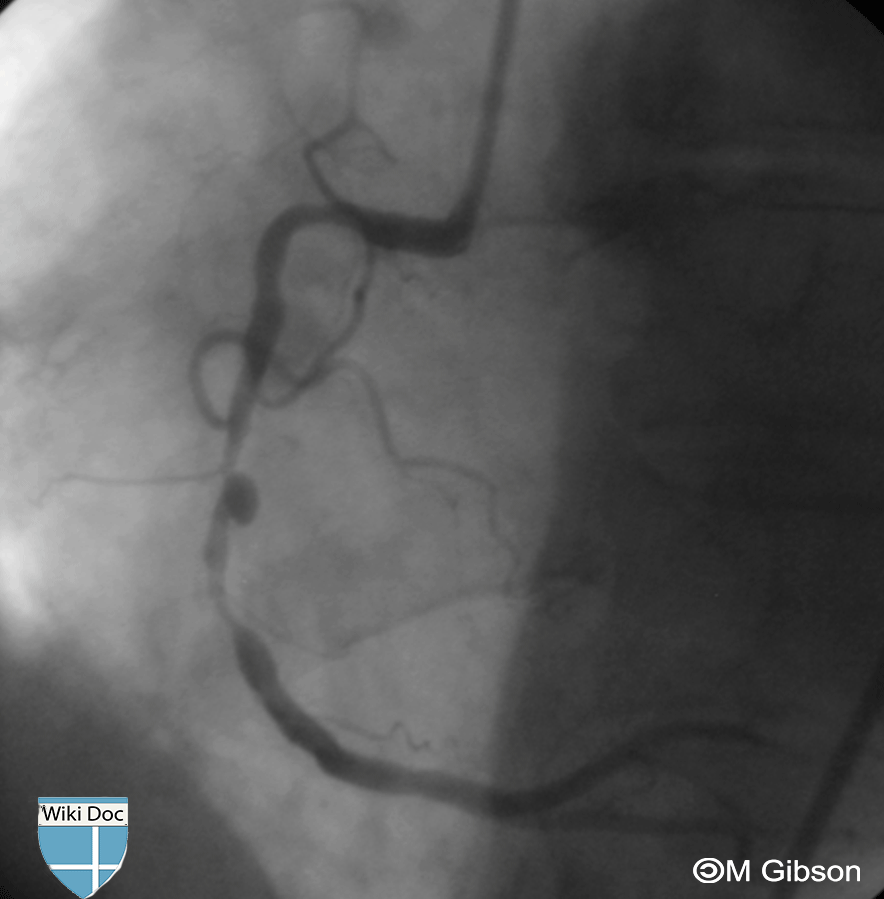Coronary artery ulceration
|
Coronary Angiography | |
|
General Principles | |
|---|---|
|
Anatomy & Projection Angles | |
|
Normal Anatomy | |
|
Anatomic Variants | |
|
Projection Angles | |
|
Epicardial Flow & Myocardial Perfusion | |
|
Epicardial Flow | |
|
Myocardial Perfusion | |
|
Lesion Complexity | |
|
ACC/AHA Lesion-Specific Classification of the Primary Target Stenosis | |
|
Lesion Morphology | |
Editor-In-Chief: C. Michael Gibson, M.S., M.D. [1]; Associate Editor(s)-in-Chief: Rim Halaby, M.D. [2]
Overview
An ulcerated lesion is defined as a cavity in the vessel wall with disruption of the intima and flow observed within the plaque cavity. Coronary artery ulceration is assessed visually using a well defined grading system. Grade 0 corresponds to no angiographic evidence of ulceration, grade 1 ulceration is present when the lesion contains a neck with contrast material dissecting under the plaque either proximally or distally, and grade 2 ulceration is present when there is distinct extravascular extravasation of contrast material with the appearance of a mushroom.
Examples
Grade 0
Grade 0: No angiographic evidence of ulceration
Shown below are an animated image and a static image depicting a normal RCA with no evidence of ulceration.
Grade 1
Grade 1: The lesion contains a neck with contrast material dissecting under the plaque either proximally or distally.
Grade 2
Grade 2: Distinct extravascular extravasation of contrast material with the appearance of a mushroom
Shown below are an animated image and a static image depicting grade 2 ulcerated lesion. Encircled in yellow in the image on the right is the ulcerated lesion which has a "mushroom" appearance.



